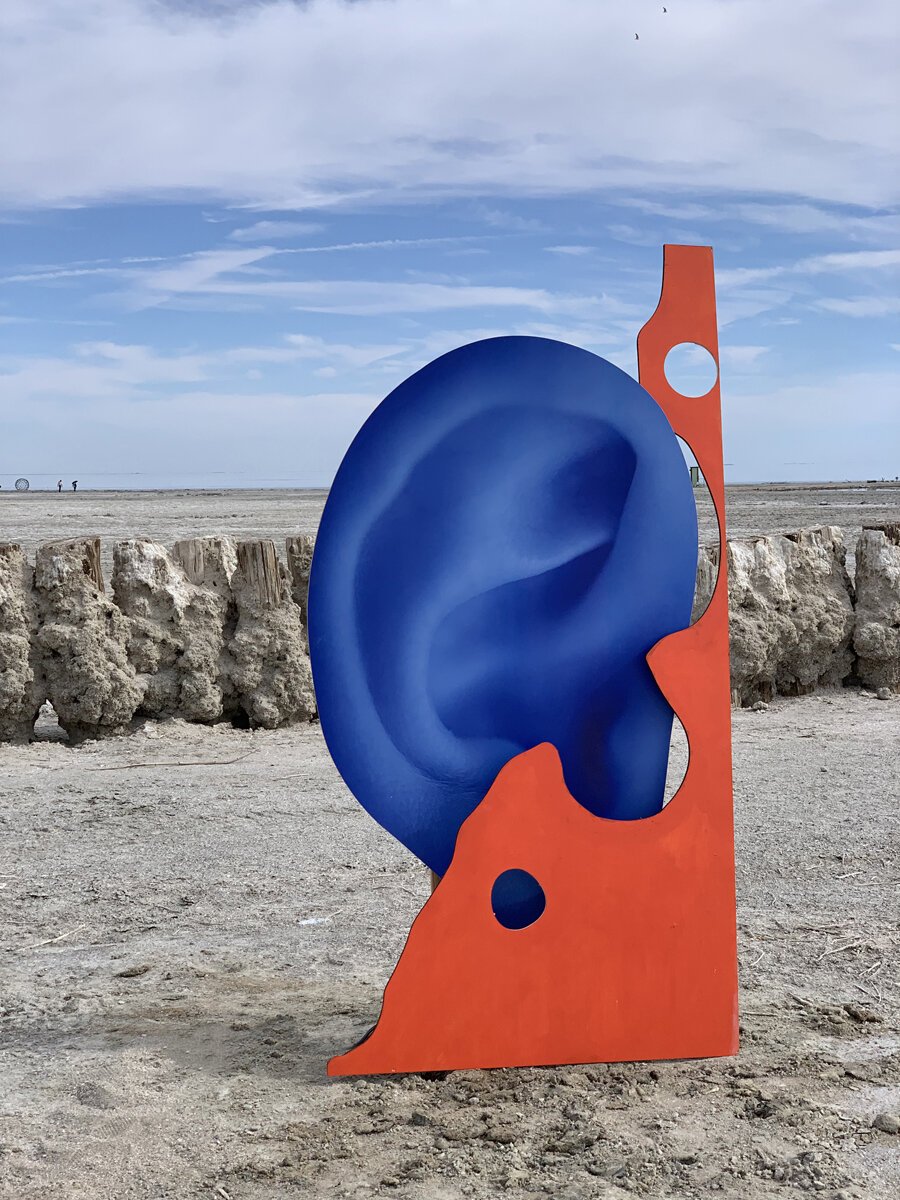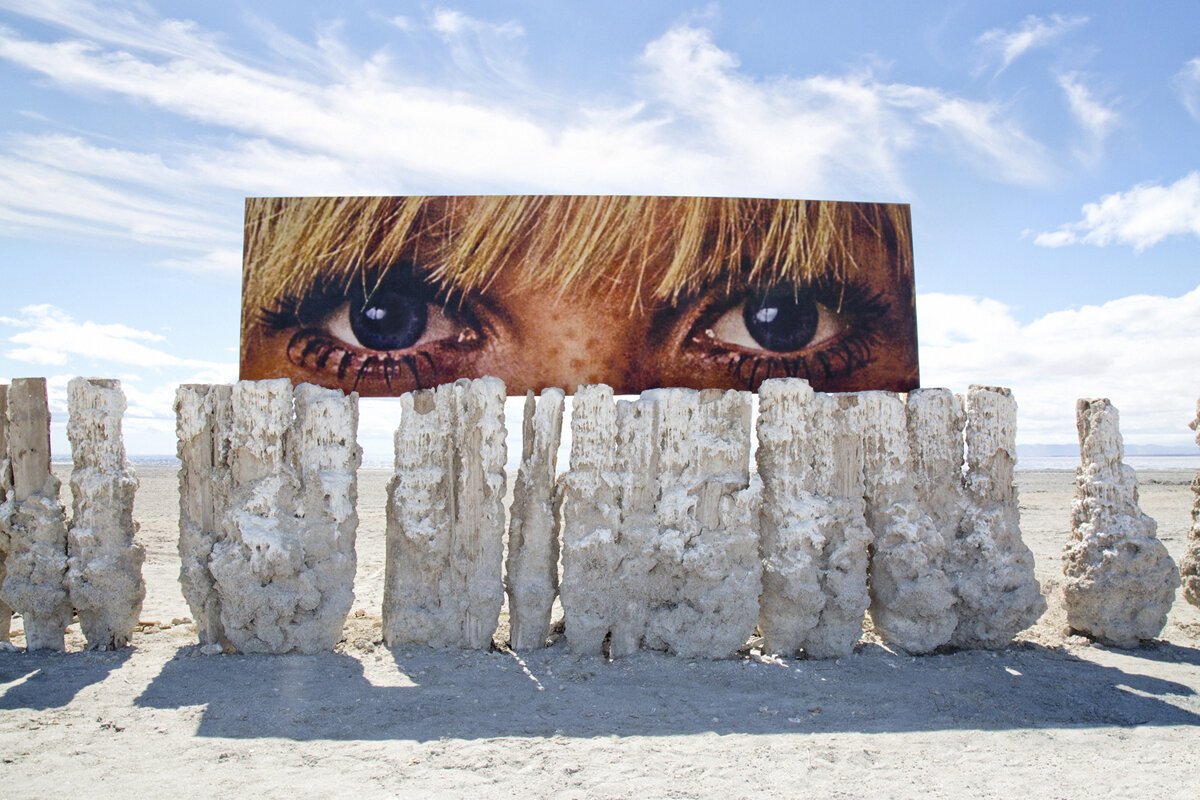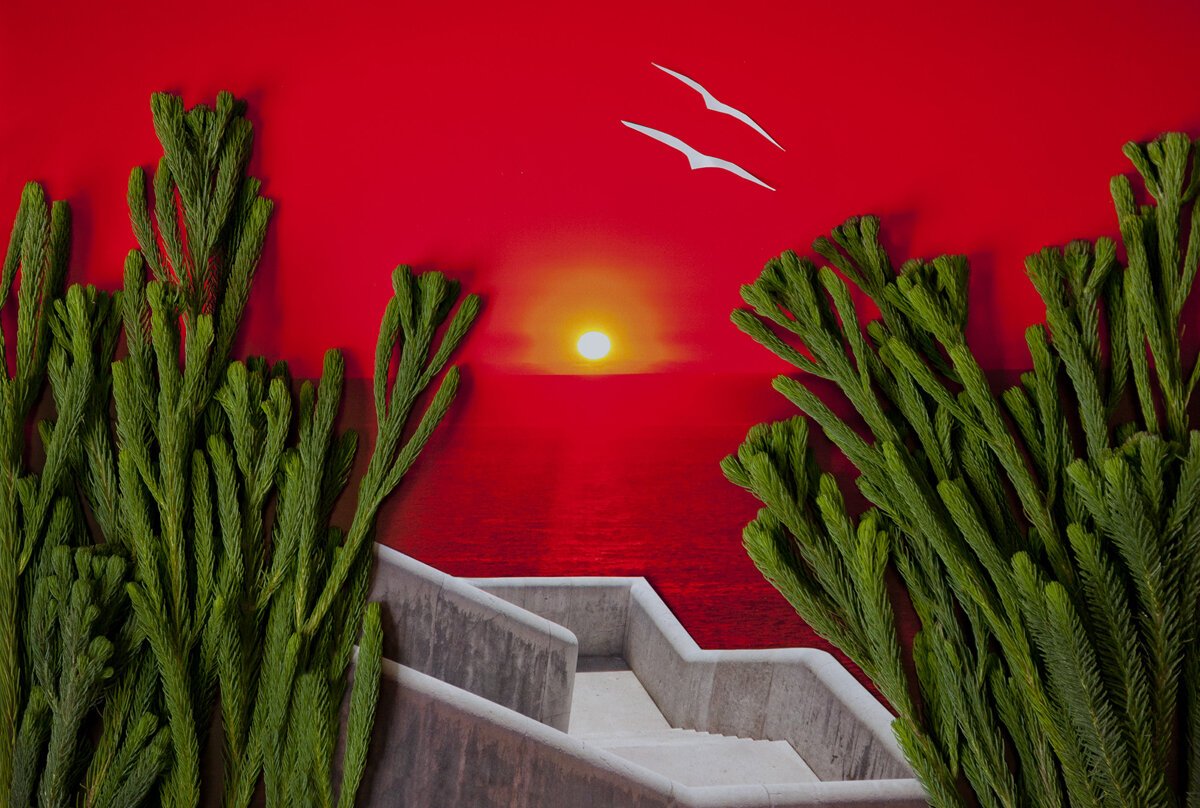Marco Walker: Hyper-Surrealist
August 20th, 2020
Artist Marco Walker pushes the boundaries of what it is to be a photographer. Creating installations, collages, lightboxes and using a wide variety of media, his contemporary pop style speaks to the way photography is changing in the art world. As the medium becomes more mainstream and instantly accessible through smartphones and social media, Marco is finding new ways to bring his photography to life. We caught up with Marco to learn more about his background, how studying in LA changed his aesthetic style and why commercial photoshoots sometimes can be as enjoyable as personal art projects.
POL: Your artistic range is really varied, incorporating photography, collage, installation and mixed media - how would you describe yourself and your artistic output?
MW: I trained at Art Center as a photographer, but the medium today is so over saturated with the rise of phones as cameras and social media pushing anyone and everyone to take great photographs. Therefore, I have had to expand my output into collage and installations but always keeping an element of the photography within my work.
POL: Can you tell us a little about your background and what drew you to art and photography? Did you have any artistic influences growing up?
MW: My grandfather and father were both keen photographers so there were always cameras lying around - we even had a darkroom in the back of our house. My parents have always collected art and so, from a very young age, I was dragged from galleries to studios visiting dealers and meeting artists. I am certain this must have had a strong influence on me forming my visual identity and learning how I wanted to express myself.
POL: We love your description of your style as “Hyper-Surrealism”, where does this come from and what does it mean to you? Surrealism is in its nature an exaggerated style - how are you taking surrealism further?
MW: “Hyper-Surrealism” is a word I have come up with to use to sum up my style. Whether I am shooting Landscapes with old rare coloured film (such as infrared) or in my collage work, “Hyper-Surrealism” is anything where you can adapt and push the boundaries moving from the real to surreal through the contrast of unexpected objects and imagery. I like the surprise and unexpectedness that arrives from juxtapositioning. I would not call myself a traditional collage artist or a traditional photographer. I feel like my work lies somewhere in the middle.
“From a very young age I was dragged from galleries to studios visiting dealers and meeting artists, I am certain this must have had a strong influence on me forming my visual identity and learning how I wanted to express myself.”
POL: Looking at your work we’ve been drawn to a central dichotomy that seems to flow across most of your imagery; one of the relationship between the natural and the manmade - the candid and the constructed. Why do you think you’ve been drawn to this relationship?
MW: I grew up with a strong affinity to nature, I spent a lot of time halfway up a mountain or out in the ocean. I think today its more important than ever as an artist to shine a light and make people aware through our work how paramount it is to protect the outstanding natural beauty that surrounds us, and how quickly it can disappear from mis-use through man. This is definitely a recurring theme in my work.
POL: You have a very distinctive use of colour, and your reportage work is shot with a strong flash, both of which disconnect your imagery from reality. Have you always shot in this pop style? How has your work evolved over time?
MW: I first got into photography while shooting candid shots of friends out and about at parties & festivals - I liked shooting with flash overpowering daylight as it enables me to freeze a moment and gives this surreal effect where the foreground and background are flattened. These early images got me my first commercial gigs for lifestyle brands and this is how my commercial career got started.
POL: Talking about your commercial career, along with producing your artwork, like most contemporary photographers, you have shot for the likes of Thomas Cook, Vodafone and BA, amongst others, how to you approach a commercial project versus how you would approach a personal artistic one? Do commercial and personal projects inform each other?
MW: Of course the freedom that comes with ones own projects, where the possibilities are endless, are amazing but they can come with their own challenges - so I enjoy having the mix of both commercial and the art side of photography. They are both so different so it keeps my ideas fresh.
On the commercial side responding to a client’s brief is always an interesting challenge, but once you crack it, it is very rewarding. Recently I had my first artistic collaboration with a brand in Mexico, Mezcal Amores, this was a great experience where I produced an installation for agave fields as well as a label for their bottle. It’s exciting to see that more and more brands are now collaborating with artists.
POL: You are very international, you’re London based, with Austrian roots and studied in LA, how has your work been informed by your travels? Would you say you have a favourite place to produce work, or one that has influenced you the most?
MW: Growing up in London but moving to California in my early 20s had a huge influence on my work - Coming from the grey, rainy climate of the UK arriving in California and experiencing its light, bright and giant open landscapes had a major impact on my work.
“Coming from the grey, rainy climate of the UK arriving in California and experiencing its light, bright and giant open landscapes had a major impact on my work.”
POL: What would be your ideal project, if time and money where no object?
MW: I feel very lucky but I feel every project I work on is my ideal project - for example, my next project’s inspiration came from lockdown. I’m creating collages of different imaginary locations around the world under lockdown, an idea I had in response to the fact that the ability to travel has clearly been compromised.
POL: That sounds really interesting, what else is next for you? What are you working on right now?
MW: During Lockdown the London gallery, Ministry of Nomads held a virtual exhibition of lightboxes of my best selling landscape work, this was surprisingly very successful show considering no opening night and very little promotion apart from social media. I am now exploring more lightbox sculptures which I am very excited about.
Commercially I’ve been shooting a campaign for a weed brand in California which has been challenging as we concepted, produced and shot during lockdown.
I’ve also recently purchased some property in the town/art community of Bombay Beach in California with some friends, where we are creating a culture club for a select group of artists to come and collaborate.
About Marco Walker
Marco Walker (b. 1976) is an Austrian-American photographer who studied under Paul Jasmin at the Pasadena Art Center College in California. His career began in San Francisco taking portraits of new bands for record labels. He has shot all over the world and last year moved to London to expand his portfolio; most recently he has been shooting for Harpers Bazaar and Browns. He has exhibited in New York and Paris.
“Marco Walker is an image maker working within the boundaries of photography, collage, alternative print methods and immersive photographic installations. Best known for his landscape imagery, his works have a unique and timeless feel that seem to endure this ever changing digital world. His works engage with themes of escapism and paradise, celebrating nature’s beauty whilst at the same time, through his use of colours, he reminds the viewer of our disconnect to it.”

















